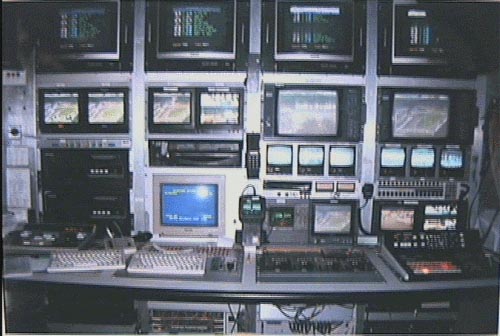Rewiring the Studio
Recently I had the pleasure of helping to reconfigure the internal wiring of the television studio. To accomplish this task I had to return to Wagga Wagga a week early. That sucked. Basically the idea was to run two SDI lines from the studio to the video router and sync lines from the black generator to use the two new JVC HD cameras on the studio floor. We also has to rewire some SDI inputs into the vision switcher to accomodate more routable inputs. I arrived and got to work straight away. We had to run 4 cables through concrete walls, under floors and terminate them on each end. This proved to be fairly simple but I had to make sure the new connections were integrated into the studio video router correctly. This turned out to be a very difficult task. The Lecturer in charge of the operation did not remember how to use the router and the instructions were written by an engineer with no concept of end user. I left on the Monday with lots of new cable but no picture.
I arrived and got to work straight away. We had to run 4 cables through concrete walls, under floors and terminate them on each end. This proved to be fairly simple but I had to make sure the new connections were integrated into the studio video router correctly. This turned out to be a very difficult task. The Lecturer in charge of the operation did not remember how to use the router and the instructions were written by an engineer with no concept of end user. I left on the Monday with lots of new cable but no picture.
The next day I arrived at 9am and immediately got to work looking throught the tome that was the Router Manual. I started fiddling with the windows 3.0 reminisent software. I has some successes and finally the video came up onto the monitor. Great but now I had to totally reconfigure the remote routing panels to accomodate these new system inputs. Two hours later and after a strange visit from the Department of Immegration Affairs video people the system was up. All I have to show is four sockets and three labels on some random panels.
Broadcast Router Manufacturer







